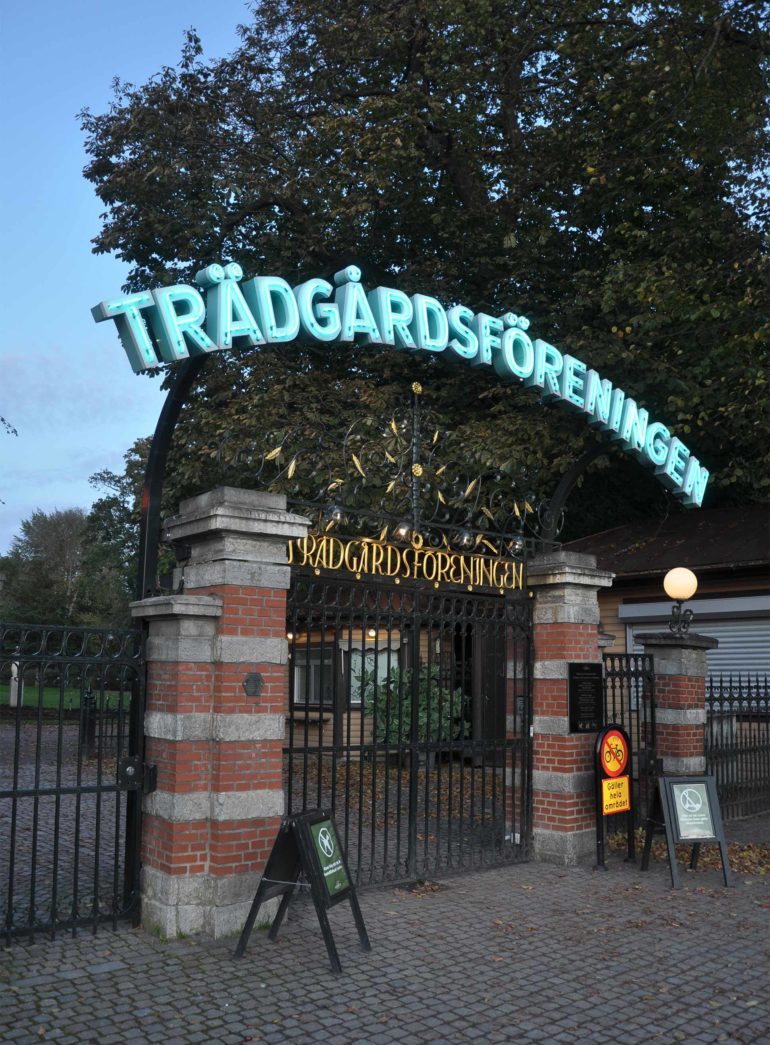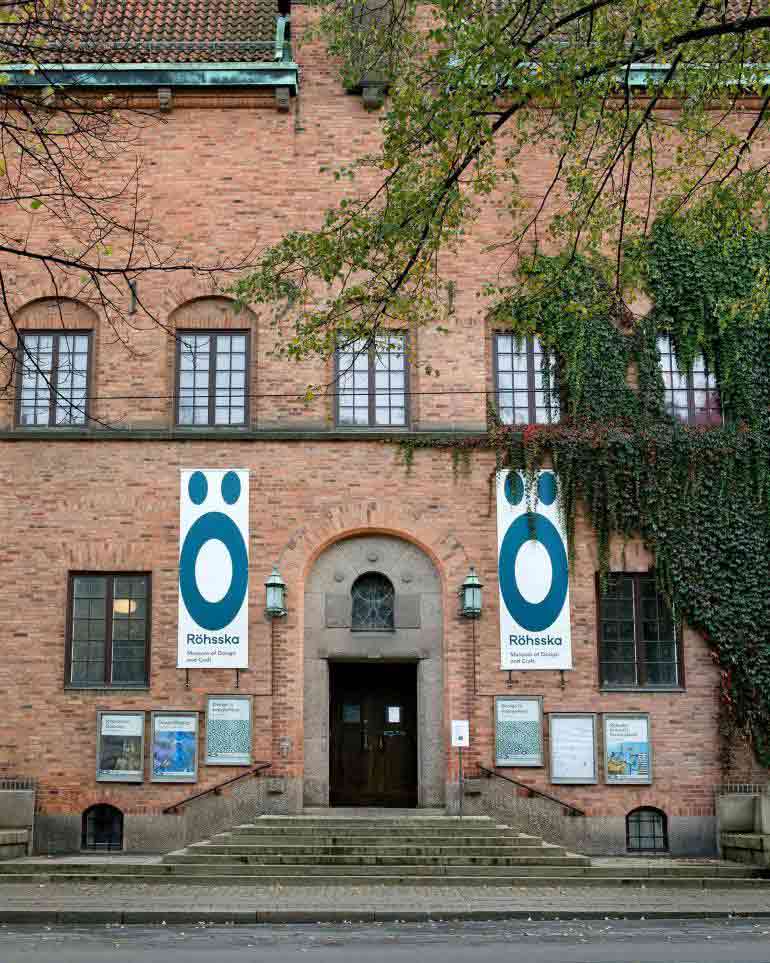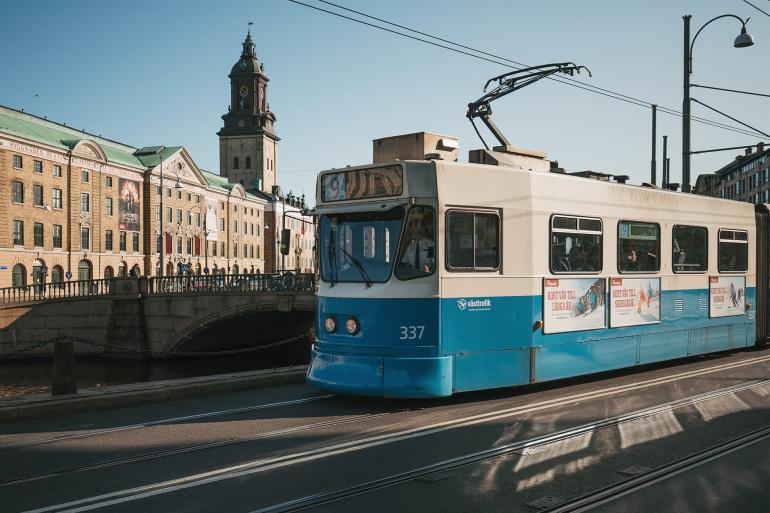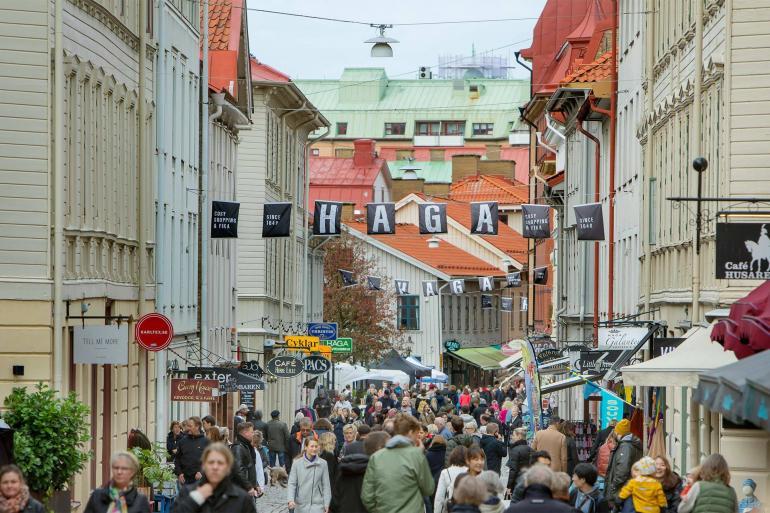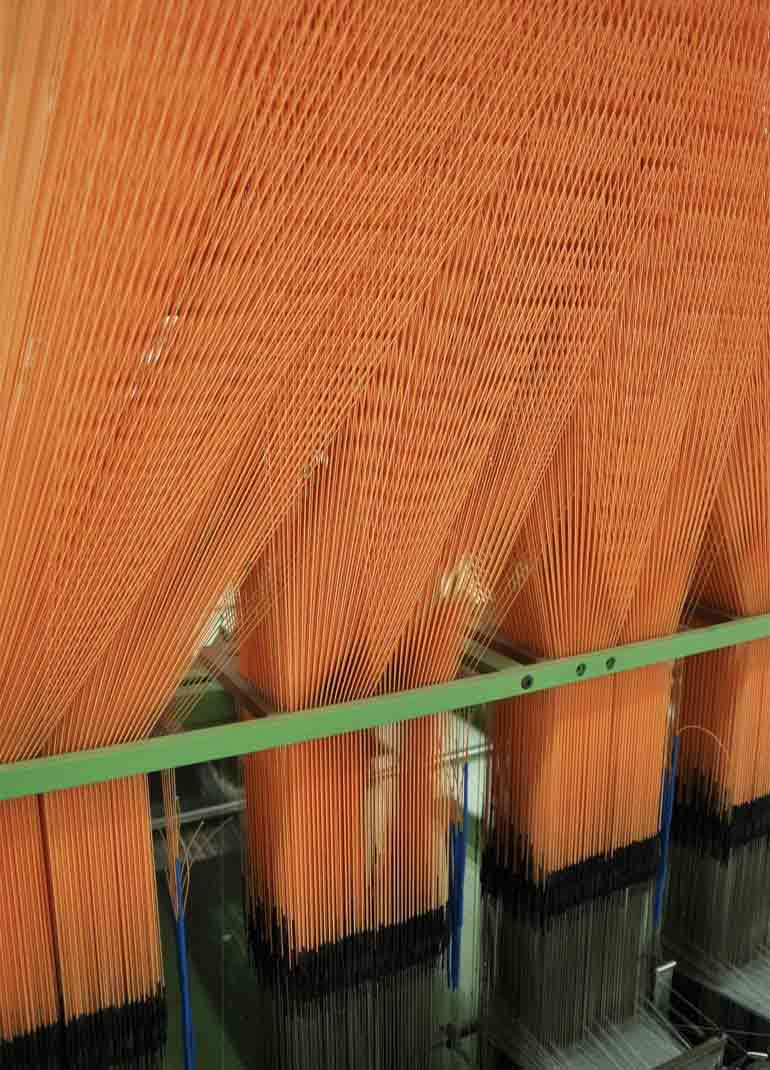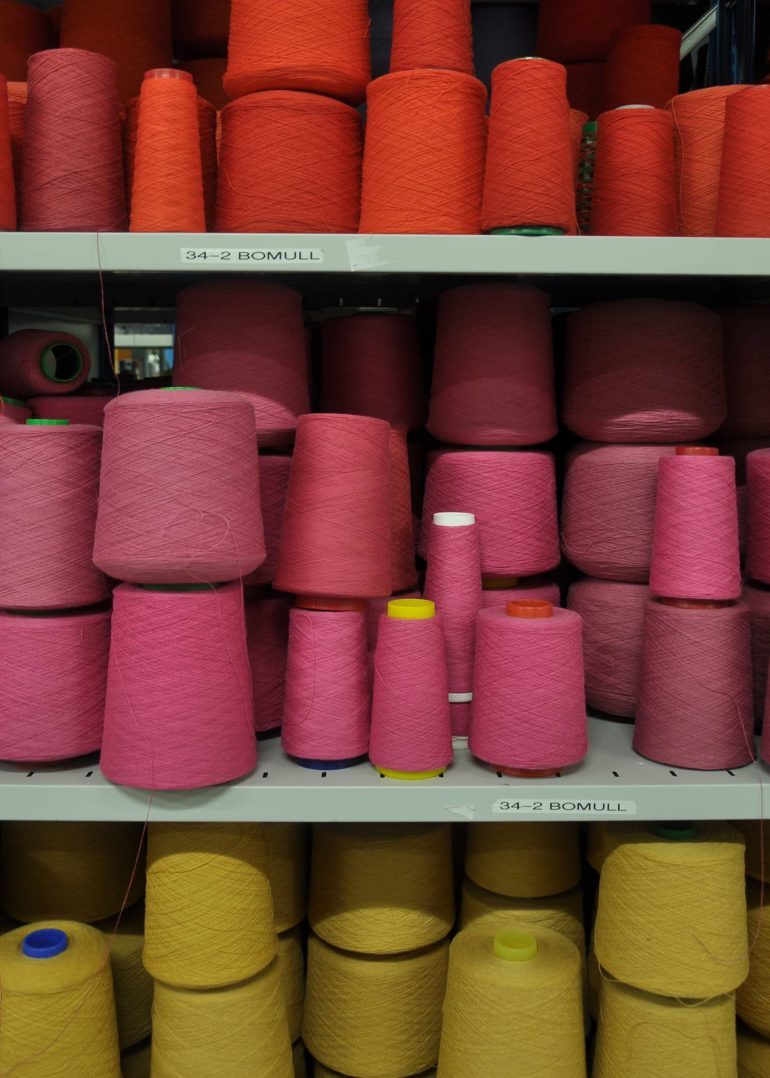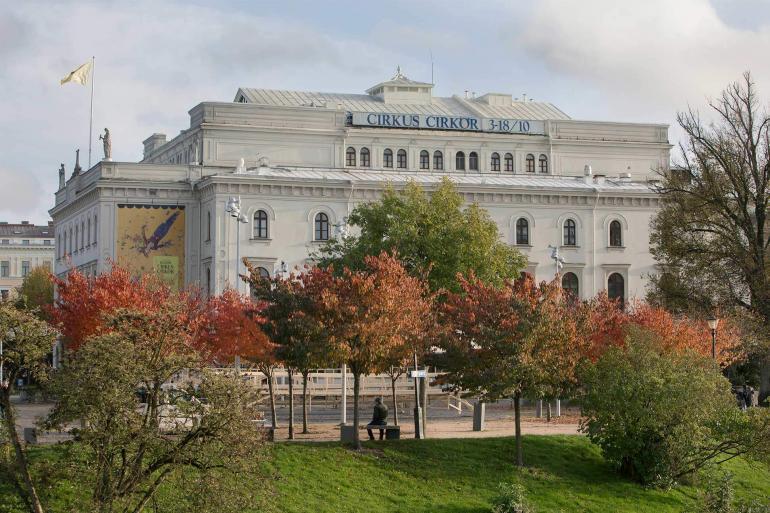Borås-bound
A mid-sized city outside Gothenburg, Borås was once a no man’s land where pedlars traded in fabrics beyond the realm of taxation (think of it as a 17th-century Panama). The region was elevated to city status in 1621 by King Gustav II Adolf, who wisely regarded the area’s trade in fabrics as a profitable source of income. It went on to become the centre of textiles in Sweden, but by 1985 its glory had faded, with the city’s last factory closing. An industrial crisis ensued and many a job was lost forever. But what remained was knowledge: of how to patch a garment and move on. And so they did.
After years of innovating and carving out a niche for itself, Borås is once again a leader in the world of textiles, a shift in fortunes that came about as a result of the city’s early recognition of the need for sustainable fashion.
At Borås’s heart sits the Swedish School of Textiles, occupying, appropriately enough, a closed-down textile factory, where I learn about paper dresses made from local trees and fabrics that disintegrate upon coming into contact with water – practical at times of overflowing landfills and fast-changing trends, though maybe less so back in London, where water-soluble attire would be a brave fashion choice, to say the least.
But fixing Borås’s broken industry hasn’t all been to do with futuristic fabrics. It’s entailed a renewed interest in more traditional skills, with Syrian refugees importing their own heritage of sewing and knitting techniques recently. It’s a textbook example of a city that’s looked at an issue and seen an opportunity, while making sure that everyone profits from the future it set out to shape.
Strolling around this prosperous city, there’s art at virtually every corner, with large-scale works by household names such as American Pop artist Jim Dine on display.
“Art in the streets is the more democratic thing to do,” explains my guide. “We didn’t want it in a museum. The whole point of art is for it to be seen”.
A question of quality
It’s at this remark that I comprehend something crucial about West Sweden: the idea for something to have a purpose and for it to serve that purpose well is inherent to Swedish design and to Swedishness too, in fact. With Stockholm having seen a spike in popularity over the past few years, the capital and its institutions have attained a prestigious and sometimes exclusive character.
West Sweden, in contrast, retains its understated take on living. When something is designed in Borås or Gothenburg, it isn’t designed to be excessive or please a selected few. The utmost criterion for anything to be made at all is for it to be just the right amount of something it actually needs to be – or, as the Swedish succinctly put it, lagom. Beauty alone isn’t reason enough for a factory chimney to start smoking and there’s no room for exorbitance.
This is also why sustainability is the lynchpin around which just about everything West Sweden revolves, for protecting the very foundation of any human endeavour – a healthy planet to pursue it on – is perhaps the ultimate object against which it is measured. Put simply, if something doesn’t aid the conservation of the ground the Swedes walk on (and that includes all the Swedes), there’s no point in making it. Seeing the area’s insistence on moderation and rightness in an age of mass consumption is a pleasure and its lack of concern about how things are done elsewhere is certainly charming. But more decidedly still, it’s what makes Gothenburg and its surrounds a great place to visit.
Everything kind of works around here not because Sweden is wealthy and budgets are big, but because appearances only matter insofar as they enhance the overall quality and don’t interfere with accessibility (neither of which would be very Swedish to compromise on). As a result, visitors find themselves feasting on excellent meals at reasonable prices, exploring exhibitions ambitious enough to move on to the world’s capitals and staying at hotels that take pride in providing a distinctively Scandinavian brand of hospitality – superb service without much ado. In other words: Gothenburg has designed itself to be the opposite of all bark and no bite, with green thinking being just one expression of this mentality.
Before leaving town, I meet Sofia Sjöström, of Nudie Jeans, for a final round of eco teachings. The iconic denim brand, whose founders are from just outside the city, has come to epitomise West Sweden’s progressiveness.
“If you buy a pair of our jeans, you get limitless free repairs, until they fall apart,” explains Sofia proudly. “At that point, you hand them in to receive a discount on your next pair. We cut the fabric up, combine its parts with another recycled item and resell the result in our Re-use range. It’s a circular economy.”
It sums up the city’s psyche rather nicely. Whatever antagonisms there might have been in the past – between its inhabitants, between the tradition of doing things one way and the drive to innovate and do them another, maybe even between glamorous Stockholm and Sweden’s second city itself – it’s over. Fiercely spirited modern Gothenburg regards itself as a place of collaboration, where average Joes and not-so-average Joes work together in the face of the challenges of an ever-faster spinning world.
Concomitant with that is its push to the front as a ‘post-tourist’ destination: a place not simply known for prominent landmarks and museums, but also for its boundless potential to inspire. Sure, Gothenburg sets a brisk pace and can come across as a little eager at times, but getting to see all the plants in this greenhouse of a city rooting for a common goal is where the municipality is at its most impressive. And, frankly, who wouldn’t fall for a place in love with the idea of a better future?
Steffen’s discovery of Gothenburg and West Sweden was hosted by Visit Sweden. Find out more at www.visitsweden.com. For more about Gothenburg, go to www.gothenburg.com. Steffen stayed at Gothenburg’s five-star Upper House, and also checked into Tollered’s Nääs Fabriker for some R&R in the Swedish countryside.
Photography by Marie Ullnert, Steffen Michels and Peter Kvarnström (courtesy of Göteborg & Co)
Get out there
Do…
… day-trip to the islands of West Sweden’s pristine Bohuslän archipelago. Their natural beauty is second to none and they’re easy to access by ferry.
… treat yourself to a Michelin-starred meal or two. We dined at intimate Koka and heard great things about nearby Restaurang 28+ (and its impressive wine cellar).
… go regal at the manors and estates surrounding Gothenburg. Our favourite was Tjolöholm castle, which served as the main shooting location for Lars von Trier’s 2011 film Melancholia.
Don’t…
… overpack. You’ll want an excuse for an extensive shopping spree in the famous Haga (antiques galore) and fashion-forward Magasinsgatan districts.
… bother with cash. Sweden is at the forefront of card and phone payments. If you want to see the Swedish krona, visit the history section of Gothenburg’s City Museum.
… think you have to see everything. Gothenburg isn’t a place to tick things off at. Ease up and let yourself be charmed by the serenity of Swedish everyday life.






